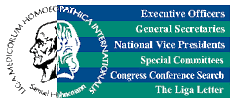

Sinusitis: Causes and Treatments
Sinusitis is an inflammation, or swelling, of the tissue lining the sinuses. Normally, sinuses are filled with air, but when sinuses become blocked and filled with fluid, germs (bacteria, viruses and fungi) can grow and cause an infection.
Conditions that can cause sinus blockage include the common cold, allergic rhinitis (swelling of the lining of the nose), nasal polyps (small growths in the lining of the nose) or a deviated septum (a shift in the nasal cavity).
Antibiotics are still being widely overprescribed for sinusitis, though the majority of these illnesses are caused by viruses, new research shows.
Studies suggest that only about 3% to 5% of acute sinus infections are bacterial in nature, meaning that they respond to antibiotic treatment.
Using data derived from two national studies of prescription practices, researchers concluded that antibiotics were prescribed for slightly more than four out of five patients with acute sinusitis and two-thirds of patients with chronic sinusitis.
Read more about treating sinusitis with antibiotics
Related to sinusitis symptoms, acute sinusitis, ethmoid sinusitis, sinus headaches, nasal congestion, chronic sinusitis, allergic rhinitis, sinus X-ray, sinus surgery
© 2008 WebMD, LLC. All rights reserved.
There are different types of sinusitis, including:
Acute sinusitis: A sudden onset of cold-like symptoms such as runny nose, stuffy nose and facial pain that does not go away after 7-10 days. Acute sinusitis typically lasts 4 weeks or less.
Subacute sinusitis: An inflammation lasting 4 to 8 weeks.
Chronic sinusitis: A condition characterized by sinus inflammation symptoms lasting 8 weeks or longer.
Recurrent sinusitis: Several attacks within a year.
Who Gets Sinusitis?
About 37 million Americans suffer from at least one episode of sinusitis each year. People who have the following conditions have a higher risk of sinusitis:
Nasal mucous membrane swelling as from a common cold
Blockage of drainage ducts
Structure differences that narrow the drainage ducts
Conditions that result in an increased risk of infection such as immune deficiencies or taking medications that suppress the immune system.
In children, common environmental factors that contribute to sinusitis include allergies, illness from other children at day care or school, pacifiers, bottle drinking while lying on one's back, and smoke in the environment.
In adults, the contributing factors are most frequently infections and smoking.
What Are the Signs and Symptoms of Acute Sinusitis?
The primary symptoms of acute sinusitis include:
Facial pain/pressure
Nasal stuffiness
Nasal discharge
Loss of smell
Cough/congestion
Additional symptoms may include:
Fever
Bad breath
Fatigue
Dental pain
Acute sinusitis may be diagnosed when a person has two or more symptoms and/or the presence of thick, green or yellow nasal discharge.
What Are the Signs and Symptoms of Chronic Sinusitis?
People with chronic sinusitis may have the following symptoms for 8 weeks or more:
Facial congestion/fullness
A nasal obstruction/blockage
Pus in the nasal cavity
Fever
Nasal discharge/discolored postnasal drainage
Additional symptoms may include:
Headaches
Bad breath
Fatigue
Dental pain
Resdung / selsema / Hidung Tersumbat / Beraiur HidungRawatan Homeopathy dan Akupunktur amat berkesan untuk merawat kes-kes resdung kronik, jangan biarkan hidung anda tersumbat, tersekat atau block nose. Rawatan resdung hendaklah berterusan dan berpanjangan.
Sumbat hidung, ketat hidung, berair hidung, gatal muka, gatal telinga, gatal mata, sakit kepala, lemah-lemah badan, pelupa, keletihan adalah gejala-jegala bagi penyakit resdung. Dapatkan rawatan segera. 'Pesanan Dr Nik Fairuz Hakim.















No comments:
Post a Comment